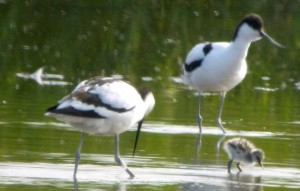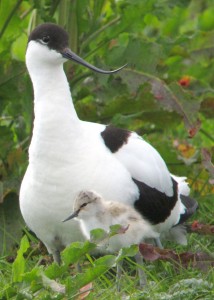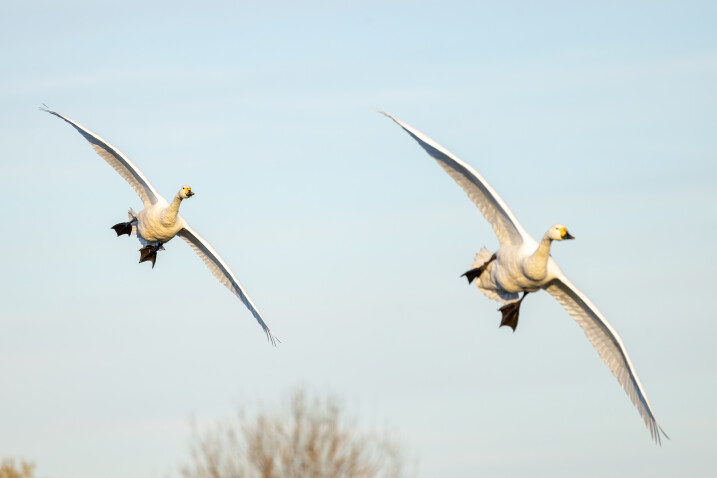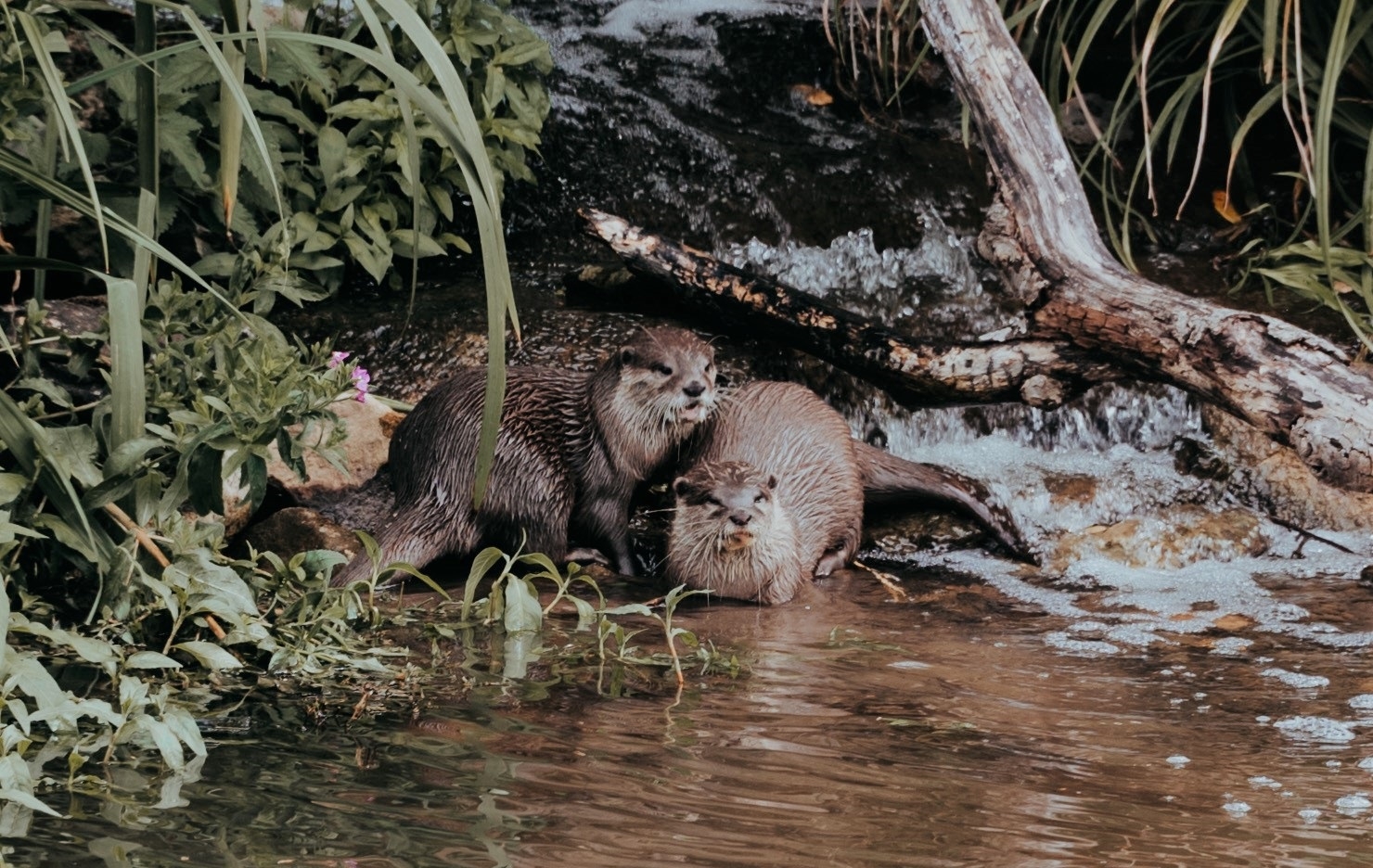Avocets continue their success story at WWT Slimbridge

Birdwatchers are celebrating after three pairs of avocets bred successfully at WWT Slimbridge.

This iconic species only bred for the first time in Gloucestershire last year when a couple of avocets reared three young chicks.
Now three sets of parents are busy rearing six young chicks on the Rushy Lake, indicating that the species could become a more regular sight in the county.
Visitors have been enjoying seeing the families as the species fiercely defends it young creating some dramatic scenes on the Lake as it chases away shelducks and gulls.
The avocet is a very distinctive looking bird which is instantly recognisable from its black and white plumage and upturned beak. Habitat destruction meant the species became extinct at one point in the UK but a few returned to our shores following World War II.
Over the last 20 years the avocet has gone from being a rare visitor to Gloucestershire a regular passage migrant. Work was done to create suitable islands for the birds to nest on at Slimbridge Wetland Centre and now these latest developments give hope that a breeding colony will establish itself here.
Since 2010 the species has shown signs it is interested in breeding at WWT Slimbridge with a pair nest building on a purpose-built island but failing. The failure may have been due to one of the pair being predated by a raptor as one of the pair went missing.
Last year six pairs showed signs of breeding and a pair settled on the saline pool on the Dumbles. They hatched three young, which were reared to fledging (flying stage) and were seen until August when they all departed.
Martin McGill, senior warden, said: “I am delighted by these developments, I saw my very first Avocet on the Rushy pen in 1986 and I was wowed by this species then.
“The wader habitat restoration and creation programme of the last ten years has opened up an opportunity for this elegant bird at WWT Slimbridge, it makes me smile and feel very good to have them here.
“I hope lots of people also come to watch and enjoy them this summer.”
The avocets can be seen from the Peng Observatory. You can hire binoculars from the shop at WWT Slimbridge.
For the latest wildlife sightings from WWT Slimbridge go online to www.wwt.org.uk/visit/slimbridge/wildlife/latest-sightings/



